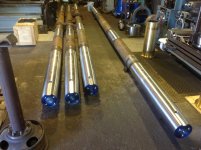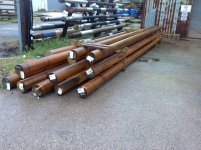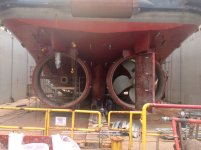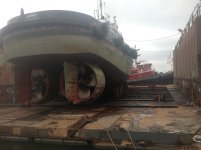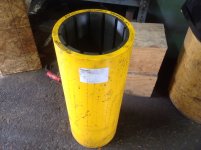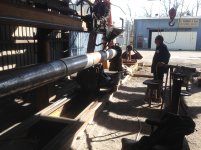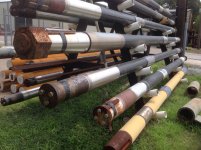jackie schmidt
New member
Jackie,
With some of the lengths and diameters you deal with, it would seem that a single cutting pass in a lathe could take hours. True?
If so, what do you think your longest pass time-wise was?
Justin
Yes it does. For a typical 9 inch diameter 28 ft shaft, with Stainless Steel Submerged Arc welded on all of the critical areas, you are looking at a final cost of around $34,000. 1/3 of that is material.
You start with 1022 hot rolled stock, straighten it and fully machine it down to the shape of the shaft. All areas that will have Stainless Steel weld overlay will be machine 3/8 under the finished sizes. The shaft is then sent to the submerged arc welder and welded. You then re-straighten where needed, and finish machine, including both tapers, and all bearing journals.
We then cut the keyseats in the prop and coupling end, and drill the coupling retainer plate holes. The shaft is then final straightened, and the coupling installed on the coupling end while shaft is in the lathe. That way we can insure that the coupling runs dead true as installed on the shaft.
We then coat all of the non Stainless Steel surfaces exposed to the water with epoxie resin fiberglass to protect against corrosion.
Yes on a shaft this long, it can take 8 to 10 hours to take the initial roughing cuts, which are usually around 3/16 to the side.
These are 9 inch shafts pretty close to being finished. The shiny surfaces are all 316L Stainless Steel weld. The other picture is raw bar stock that we start with.
http://benchrest.com/attachment.php?attachmentid=18174&stc=1&d=1470783637
http://benchrest.com/attachment.php?attachmentid=18175&stc=1&d=1470783924
Attachments
Last edited:


